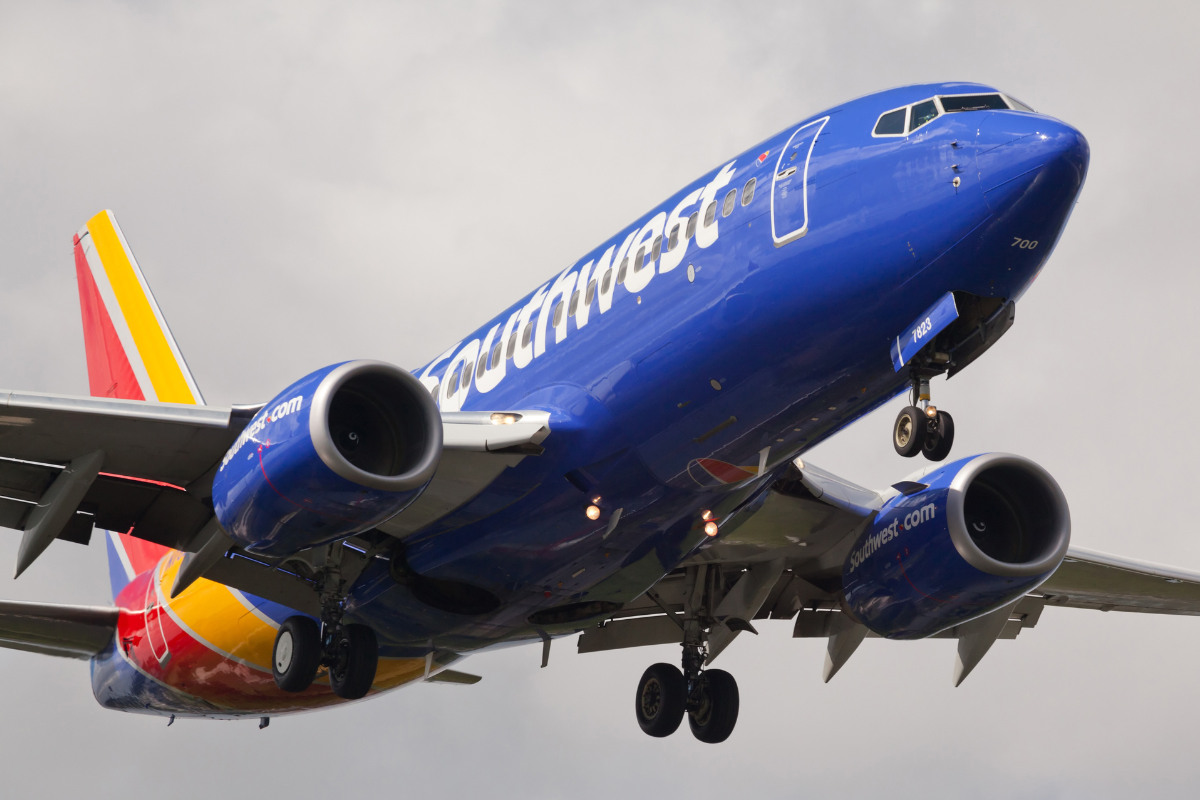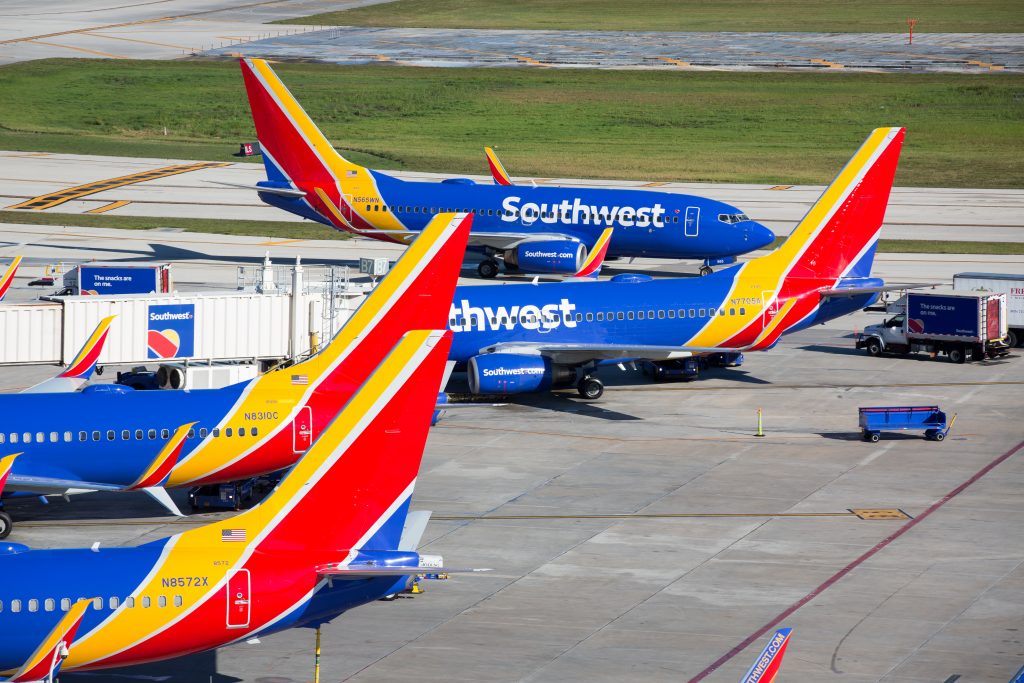
Southwest Airlines has ordered flight attendants to wrap up cabin service and prepare the cabin for landing earlier over rising fears that crewmembers could be seriously injured from turbulence.
In an internal memo seen by View from the Wing, the Dallas-based carrier says it has made the decision based on years of research and numerous safety reports filed by flight attendants.

It is hoped that the new policy will reduce flight attendant injuries by as much as 20%, although the updated procedures will be subject to review, and if it doesn’t “achieve the desired result,” further action could be taken.
Until now, Southwest Airlines flight attendants have typically started to secure the cabin and then strap themselves into their jumpseats at just 10,000 feet but the updated procedure will require crew members to begin securing the cabin at the higher altitude of 18,000 feet.
At 18,000 feet, it will typically take a Boeing 737 around 10 to 15 minutes to land, whereas, at 10,000 feet, a typical passenger plane could land in less than 10 minutes, depending on factors such as holding and vectoring.
A few years ago, the National Transportation Safety Board (NTSB) published detailed research about the risk of turbulence, which concluded that the majority (36%) of turbulence-related accidents occurred during descent, based on real accident data from 2009 to 2018.
Delving deeper into this data, the NTSB found that more than 65% of turbulence-related accidents during the descent phase occurred below 20,000 feet, with flight attendants most likely to be injured.
In fact, flight attendants accounted for nearly 80% of serious turbulence-related injuries, with most tumbling over in the aft part of the aircraft cabin. Around 40% of flight attendant injuries happened when they were preparing the cabin for landing.
A similar study by the Joint Safety Analysis Team for Commercial Aviation found that flight attendants were 24 times more likely to be injured as a result of turbulence than passengers.
The JSAT report recommended that flight attendants should be seated for landing at around 20,000 feet. The NTSB did not state a preferred altitude at which flight attendants should be seated for landing but concluded that “having flight attendants seated with their seatbelts fastened during additional portions of the descent phase of flight would reduce the rate of flight attendant injuries.”
The new procedure at Southwest will come into effect on December 4.
The internal memo further explained: “Inflight Safety and the TWU 556 Health and Safety Committee have been integral in developing these new procedures. Together, we have shaped procedures that prioritize your Safety and are fully aliged with our Company Safety objectives of preventing Flight Attendant Injury.”
“The evaluation of thousands of data points from Flight Attendant and Pilot reports paired with information from the Flight Data Analysis Program (FDAP), confirmed that seating our Flight Attendants earlier should reduce Flight Attendant injuries by at least 20%.”
Earlier this year, Korean Air confirmed that it would wrap up cabin service on long-haul flights at 40 minutes to landing as part of its efforts to reduce turbulence-related injuries. The previous limit had been 20 minutes prior to landing.
At this point, flight attendants will no longer serve passengers and all service-related items like meal carts will be securely stowed.
Related
Three Flight Attendants, One Passenger Injured as Turbulence Hits Southwest Airlines FlightIn "Airline News"
These Are The Flights That Southwest Will Cut Onboard Drinks Service Because Flight Attendants Have to Be Sat Down For Much LongerIn "Airline News"
Korean Air Says it Will Wrap Up Cabin Service Earlier Over Rising Turbulence FearsIn "Airline News"
Mateusz Maszczynski honed his skills as an international flight attendant at the most prominent airline in the Middle East and has been flying ever since... most recently for a well known European airline. Matt is passionate about the aviation industry and has become an expert in passenger experience and human-centric stories. Always keeping an ear close to the ground, Matt's industry insights, analysis and news coverage is frequently relied upon by some of the biggest names in journalism.








We started cleaning up at 10k feet. Sometimes we were seated until just a minute or two before landing. Or about 1000ft. Glad this change was made.